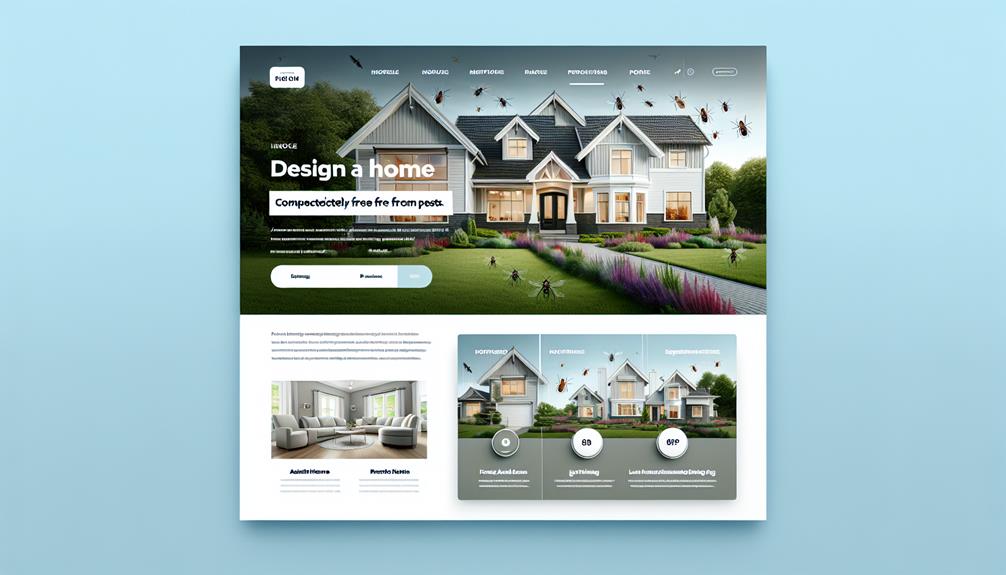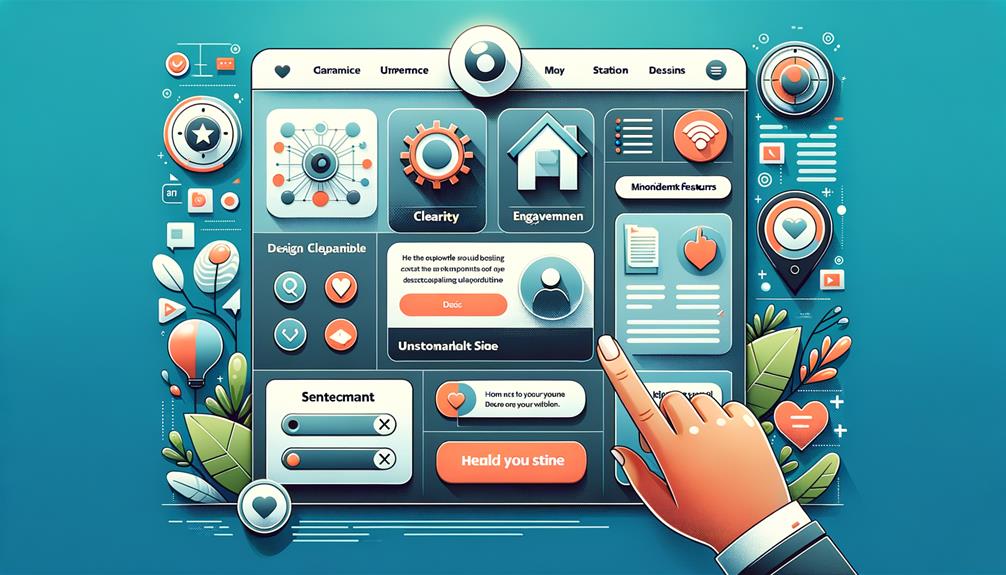So you’ve built a pest control website and you’re eager to reel in those visitors, but how do you turn them into paying customers?
Well, hold onto your seat because we’re about to spill the beans on the key elements that will make all the difference.
From an eye-catching homepage design to user-friendly navigation, we’ll explore the secrets that will have potential clients flocking to your website like bees to honey.
But that’s not all, there’s one crucial element that can’t be overlooked if you want to seal the deal and convert those visitors into loyal customers.
Curious? Keep reading, because we’re about to reveal it all.
Table of Contents
ToggleKey Takeaways
- High-quality images and engaging visuals are crucial for showcasing pest control services and creating a positive first impression.
- Compelling headlines and subheadings that highlight benefits can grab the attention of website visitors and differentiate the services from competitors.
- A persuasive call-to-action that emphasizes the benefits of taking action and uses action verbs can create a sense of urgency and encourage immediate conversion.
- Testimonials, reviews, and case studies act as social proof, building trust and reassurance for potential customers and increasing the likelihood of conversion.
Eye-catching Homepage Design

Make your website’s homepage visually appealing and captivating to grab the attention of visitors and keep them engaged. Engaging visuals and persuasive copywriting are key elements in creating an eye-catching homepage design that converts pest control website visitors.
When visitors land on your homepage, they form an instant impression of your business. To make a lasting impact, use high-quality images that showcase your services and create a sense of trust and professionalism. Incorporate engaging visuals, such as images of pests being eradicated or happy customers enjoying pest-free environments. These visuals won’t only grab attention but also convey the message that you’re the solution to their pest problems.
In addition to visuals, persuasive copywriting is essential in capturing the interest of visitors. Craft compelling headlines and subheadings that highlight the benefits of your services. Use concise and persuasive language to convey your expertise and unique selling points. Focus on addressing the pain points of your target audience and offering solutions that set you apart from the competition.
Clear and Compelling Call-to-Action
To effectively convert pest control website visitors, ensure your call-to-action is clear and compelling, guiding them towards taking the desired action. Your website may have engaging content and persuasive copywriting, but without a clear and compelling call-to-action, visitors may leave without taking any action.
A call-to-action is a prompt that tells your visitors what to do next, whether it’s to schedule an appointment, request a quote, or sign up for a newsletter.
When creating a call-to-action, use persuasive copywriting that emphasizes the benefits of taking action. Highlight how your pest control services can solve their problems and improve their lives. Use action verbs to create a sense of urgency and encourage immediate action. For example, instead of saying ‘Learn more about our services,’ use ‘Schedule a free inspection today and get rid of pests for good.’
Make your call-to-action visually appealing by using contrasting colors and placing it in a prominent position on your website. Use clear and concise language, and make sure it stands out from the rest of the content. Test different variations of your call-to-action to see which one resonates the most with your audience.
Trust-building Testimonials and Reviews

After guiding your website visitors towards taking action with a clear and compelling call-to-action, the next step in converting them is by showcasing trust-building testimonials and reviews. These testimonials and reviews play a crucial role in establishing credibility and building trust with your potential customers.
Here are three reasons why trust-building testimonials and reviews are essential for converting pest control website visitors:
- Credibility building case studies: By featuring case studies that highlight successful pest control solutions and satisfied customers, you can demonstrate your expertise and effectiveness in tackling pest-related issues. These real-life examples add credibility to your claims and help potential customers see the value in choosing your services.
- Customer satisfaction ratings: Displaying customer satisfaction ratings and reviews on your website creates a sense of trust and reassurance. When visitors see positive feedback from satisfied customers, it instills confidence in your ability to deliver quality pest control services. Including ratings and reviews also encourages potential customers to share their experiences, further strengthening your reputation.
- Social proof: Testimonials and reviews act as social proof, showing that others have already benefited from your services. People tend to trust the opinions and experiences of their peers, so featuring positive feedback can sway potential customers towards choosing your pest control company over competitors.
User-friendly Navigation and Layout
When designing your pest control website, prioritize creating a user-friendly navigation and layout to ensure a seamless browsing experience for your potential customers. User engagement and website usability are critical factors that can make or break the success of your website.
A cluttered and confusing website layout can frustrate visitors and drive them away, while a well-organized and intuitive navigation system can encourage users to explore your services further.
To enhance user engagement, make sure your website has a clear and easily accessible menu that allows visitors to navigate effortlessly. Use descriptive labels for each page and arrange them logically, so users can quickly find the information they need. Additionally, consider incorporating a search bar to enable users to search for specific content.
Another important aspect of a user-friendly website is responsive design. Ensure that your website is optimized for different devices, including desktops, laptops, tablets, and smartphones. Responsive design ensures that your website looks and functions well on any screen size, improving user experience and keeping visitors engaged.
Remember to keep your website design clean, visually appealing, and consistent with your brand identity. Use high-quality images and graphics to enhance the overall aesthetic appeal of your website.
Mobile Responsive and Fast-loading Pages

Make sure your pest control website is mobile responsive and has fast-loading pages to provide a seamless browsing experience for your potential customers. In today’s digital age, more and more people are using their mobile devices to browse the internet. Therefore, it’s crucial that your website is optimized for mobile devices to ensure that it loads quickly and displays properly on smaller screens.
Here are three key reasons why mobile optimization and fast-loading pages are essential for converting website visitors:
- Improved User Experience: When your website is mobile responsive, it automatically adjusts its layout and design to fit different screen sizes. This ensures that your potential customers can easily navigate through your site, read your content, and access your services, regardless of the device they’re using.
- Higher Search Engine Rankings: Google prioritizes mobile-friendly websites in its search results. By optimizing your website for mobile devices, you increase your chances of ranking higher in search engine results pages, driving more organic traffic to your site.
- Faster Page Speed: Studies have shown that users are more likely to abandon a website if it takes more than a few seconds to load. By optimizing your website’s page speed, you reduce the risk of losing potential customers due to slow loading times.
Investing in mobile optimization and fast-loading pages is an essential step in converting pest control website visitors into paying customers. It not only improves the user experience but also increases your chances of attracting more organic traffic and reducing bounce rates.





